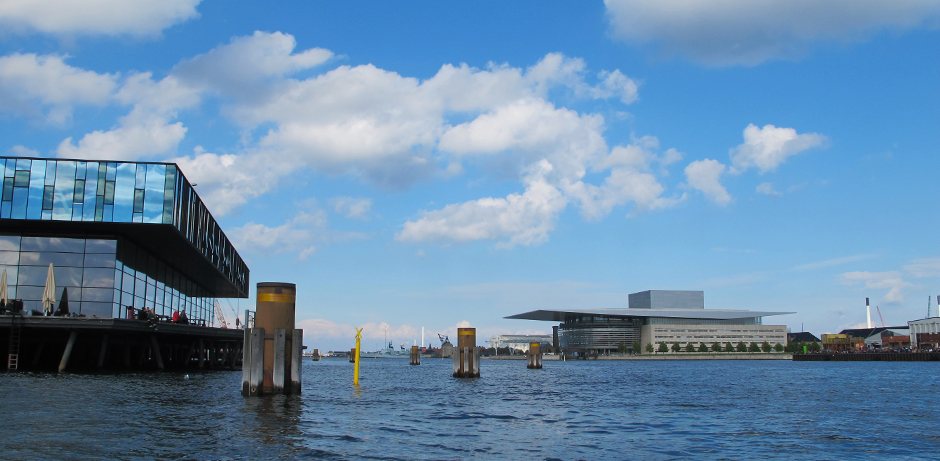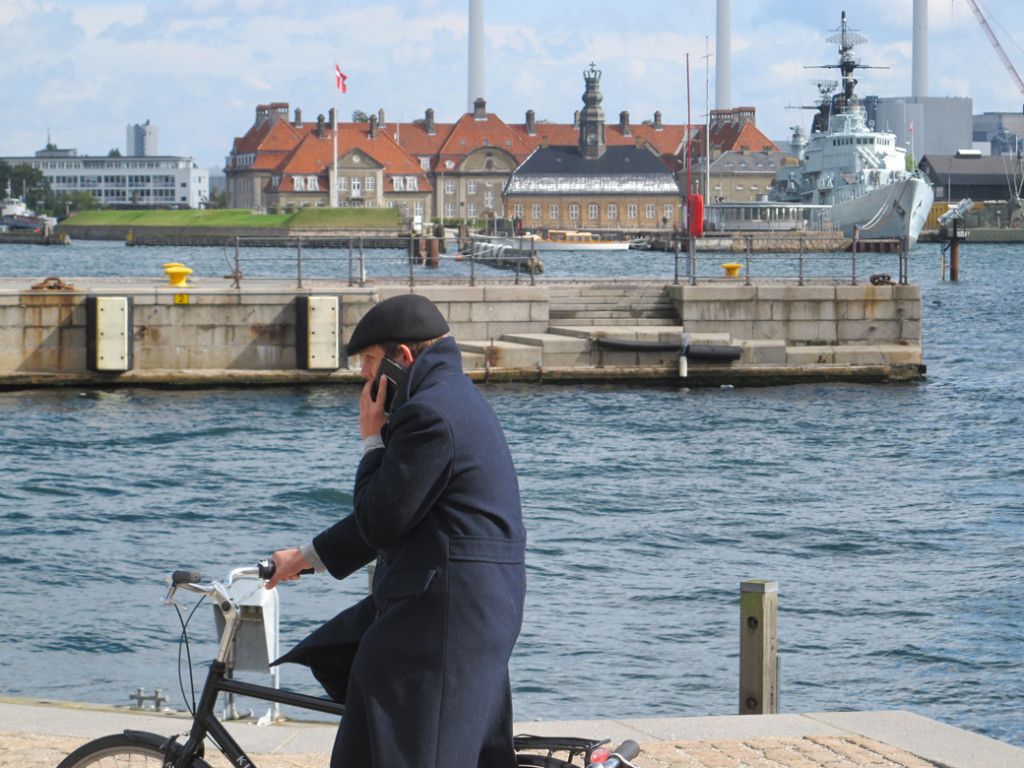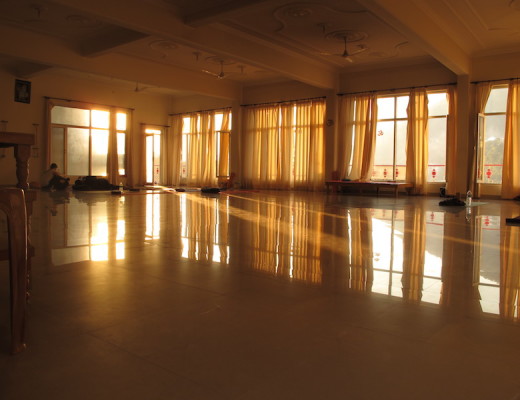As I explored Denmark’s capital by bike, I realized I was using the word “cool” with obnoxious frequency and couldn’t help but cringe at my lack of adjectives. But if there’s any city that merits such profuse usage, it’s Copenhagen. The cafes, store windows, outfits, apartments, bicycles and hangouts that you’ll see while roaming the streets are quite simply the epitome of cool.
Less grunge and more affluent than Berlin, the city is teeming with students, rebels and trendy moms alike. With their tweed buggies, chunky knits and round eyeglasses you may leave with an inferiority complex. Even if sometimes calculated, the coolness of Copenhagen is undeniable, a fact that I’m pretty sure is not lost on the locals.
What saves Copenhagen from becoming another trend-abiding metropolis is its historically rebellious spirit that endures today, keeping the city authentic and just radical enough. For years there have been those who have fought against the city’s gentrification and commercialization.
Marie, my Danish friend and host, pointed out an example of this spirit. Joe and the Juice is a trendy coffee chain that blasts edgy rock/hip hop and caters to the stylishly tattooed and carefully bearded. In an attempt to drive out such corporate establishments, the facade of this cafe and others like it have been mercilessly covered in graffiti, ironically just making them even more hip.
The city’s rebellious side is a cornerstone of its history that includes the squatter, or BZ, movement. We visited the lot that once held the Ungdomshuset, or youth house, a controversial hub of the movement. After a police raid, violent conflicts and a refusal by young squatters to hand the building over to its owners, the house was eventually torn down. In its place is a brightly-colored park, decorated lovingly with psychedelic graffiti and furniture. Though no longer a structure, it is still a site for gatherings of both the raucous and mellow sort.
The park is situated in Nørrebro, a diverse part of the city that is home to students and littered with excellent falafel joints. Once seedy, the only danger now is hipster overload. Try Take and Eat on Nørresbrogade. I promise the mouthwatering falafel will make you forgive its uncreative name. On Blågårdsgade, another street in the area, you can find Cafe N, a vegetarian restaurant with an economical 40kr Friday dinner special. Have your aperitif or digestive at one of the bars next door.
Perhaps the site that best represents Copenhagen’s affinity for the alternative is Freetown Christiania. Having not skimmed a guidebook before visiting, I had never heard of this community and was amazed by what I saw. Christiania, a piece of land in the eastern part of the city, was established by squatters in the 70s who wanted a place free of governmental laws and taxes. After threats of closure, the area was ultimately saved by the city’s wider residents, with many of them, my friend Marie included, throwing in roughly €13 to buy a share.
Christiania is alive and well today with a population of about 1,000. Walking along the water you get a glimpse of the relaxed, alternative lifestyle. Community decisions here are not based on the majority opinion but can only be taken after a unanimous vote, making for long town meetings.
The main entrance leads you into a lively cafe and concert area with free shows in the summer. Booths along Pusher street are covered to hide the identities of the people inside rolling and selling joints. All you can see are hands hard at work. Photos are strictly prohibited, a rule that I wouldn’t test.
In general though, the vibe is a peaceful one, with people mingling around the cafes, galleries, terraces, lake shore and amphitheater, chatting and engaging in marijuana-themed fun. Police do make the occasional raid, but from what I could see, have not left any lasting impact.
Nearby Paper Island is an example of industrial chic done right. The large, open warehouses once used to store…you guessed it…paper now house the Experimentarium and Copenhagen Street Food. The latter is an entire hall filled with food trucks, booths and themed sitting spaces. For slightly overpriced craft brews, modern snacks and music, this is the place to go. If the weather is nice, there’s casual seating outside along the pier.
Spaces in this same spirit include the renovated Meatpacking district in Vesterbro, hosting clubbers and cafe goers, and Løgismose on the other side of the harbor. Vestebro, once a working class, prostitute-laden area, is filled with miniature one-room cafes. The larger Bang & Jensen cafe makes for a cozy stop. While the popular industrial look might be getting repetitive for locals, it’s refreshing for those of us visiting from more traditional places, like Luxembourg.
Although the city is not sprawling, I still recommend experiencing it in true Danish fashion: by bike. Each neighborhood offers its own flare and lets you see the capital from a new angle. Between its appreciation of the aesthetic and penchant for unruliness, Copenhagen is a blast to explore that is absolutely worth a visit, especially if coolness is contagious.
Tips
If you feel like getting out of the city for a day, you can head up to Helsingør, a charming seaside town. Most importantly, it’s home to Kronborg where Shakespeare’s Hamlet is set. There’s a path that lets you walk along the moat and the beach all the way around the castle. Grab a coffee at the entrance to help counter the cold wind during your walk. When I was there the waves were breaking dramatically against the seawall and I could almost hear Hamlet reciting his tormented soliloquy.
Afterwards, I took a 20-minute ferry ride over to Helsingborg, Sweden. Unlike Helsingør’s small-town atmosphere, Helsingborg has large ornate brick buildings and a big-city feel. I then took a train down to Malmö before heading back to Copenhagen.
Eating
Bang & Jensen, Vesterbro, http://blog.bangogjensen.dk
Cafe N, Nørrebro, cafe-n-2200.dk
Copenhagen Street Food, Paper Island, copenhagenstreetfood.dk/en/food-stalls/
Torvehallerne covered market, Central Copenhagen, torvehallernekbh.dk
Take and Eat, Nørrebro, www.yelp.com/biz/take-og-eat-københavn
Five Star, Nørrebro, www.yelp.com/biz/five-star-shawarma-københavn
Late night
Folkets Hus (The People’s House), Nørrebro, www.folketshus.dk/english-info/
Also a product of the squatter movement, it’s good for a coffee, dancing and cultural events.









































No Comments